Review by Pete Vack
All images courtesy of the publisher except as noted
Order from: www.waft.be
300 pages, 30 x 30 cm, 90 Euros
Ercole Spada: If the name does not ring a bell, it should and it is high time Zagato’s most important designer be given credit, in this case a long-overdue book. Appropriately entitled Spada: The long story of a short tail by Belgian Bart Lenaerts and his team at WAFT Publishing, it is stylishly produced with the cooperation of Ercole Spada himself, along with his son Paolo. Even more stylistic is a limited edition version of 150 books with an aluminum casing, signed by Ercole Spada, priced at 350 Euros. Both versions are in English only.
Spada is not a concise, practical, well documented and researched biography of Ercole Spada. Based on their previous (and award-winning) books, Ercole Spada approached WAFT to publish. Says Lenaerts “Ercole was closely involved, but we were totally on our own in terms of content and layout.” WAFT books are often long on art and often a bit short on substance; fortunately Spada is suitably artistic while sufficiently covering the subject matter with depth and accuracy.At the same time, there are no references, no related interviews or opinions from others in the industry, no index, and obviously no bibliography. Granted, there are few left to tell the story; this then is Spada’s story as related by Spada and translated into a graceful and artful autobiography by Lenaerts. For that we can be thankful, for it is a beautiful book, well-told, entertaining and a wealth of new information concerning both Spada and Zagato.
It is doubtful that anyone else will ever have the kind of wonderful opportunity granted to Spada, the son of a textile factory engineer in Busto Arsizio near Milan. Young Ercole was smitten with cars and spent his spare time drawing them and making booklets such as the “Il Progresso dell’automobile” (thankfully preserved and presented in the book). After graduating from high school, Spada began his two years of military service, after which he wrote three letters of application, one to Abarth, one to Alfa, and another to Zagato. He interviewed with Elio Zagato who wanted to know if he had a driver’s license and could draw 1 to 1 on a big board. Spada had a license but had never been a draftsman and did not do 1 to 1 drawings. Nor did he bring along a portfolio of his work. Nor did he have any formal training. He was hired anyway. The date is unspecified, other than 1960.
A few months later he was designing the difficult Bristol 406S for Tony Crook. That same year, he was responsible for the stunning Aston Martin DB4 GT Zagato, a car which many think is Zagato’s finest moment. Ercole Spada was only 23 years old.
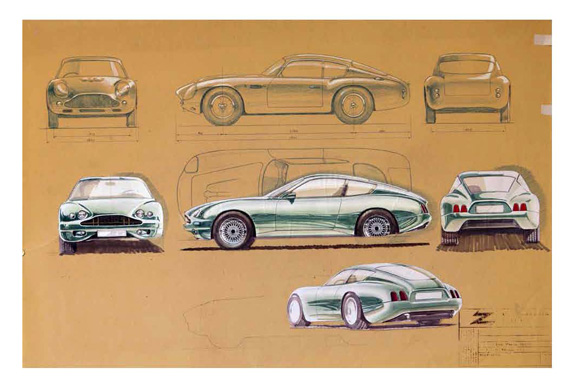
Sketches for the Aston Martin DB4 GTZ. Spada liked to work on yellow paper as he could use white to highlight.
Credit where credit is due
Rags to riches, Italian style, but for Ercole there were no riches, not even recognition. Spada was simply one of the 30 some employees of Zagato who worked for the love of it. “Looking back, I wasn’t paid very well,” recalled Spada. “Yet I couldn’t care less. I was living my dream, working on race cars.”
Recognition was another matter though, as until the day of Giugiaro, designers weren’t superstars. But when Doug Blain visited the Zagato works in 1961 for an article for Road & Track, he was guided through the shop by Gianni Zagato. By this time Spada had done the Aston Martin, the OSCA GT, the famous “Coda Tronca” Alfa, and was working on the Lancia Flaminia. But Gianni convinced Blain that it was he who was responsible for the designs: “…it is he himself who designs all the bodies that carry his family’s name.” This too is fair enough; owners call the shots. But there was no mention at all of Ercole Spada in Blain’s article.
Another 8 years go by and a slim book Zagato was published, written by Fagiuoli and Gerosa in Italian and profusely illustrated with Spada’s handiwork. At the back of the book, there is a brief mention of their designer: “And finally, the designer Ercole Spada, which in the long years of collaboration has been able to properly interpret the taste and the setting of Zagato.”
Alas by then Spada was walking out the door.
Repeatedly Spada claims that before he came, Zagato cars weren’t designed, they just happened. And no doubt that too, was true. But there was design life before Spada, as the series of bodies built on the 250GT Ferrari chassis made perfectly clear, not to mention the Otto Vus and Abarths. In his book, Zagato, Seventy Years in the Fast Lane Michele Marchiano tells us that as Gianni took over design responsibilities in 1956, he was ably backed by long time draftsman Celestino Zoppi, who had been Ugo’s right hand man for many years. By 1960, Gianni’s role was changing as the company expanded both its line of car and planned for a larger factory. Spada filled the void; we don’t know what happened to Zoppi.
The story of the short tail…
In both Marchiano’s history and Marcello Minerbi’s excellent Alfa Romeo SZ and TZ credit for the development of the clipped tail SV is given to Elio; he gives the orders while Ercole Spada, the designer, is just along to work the stopwatch on the Milano-Bergamo highway. Elio and Ercole affixed a temporary long tail to the round tail SV and began to experiment. But the ‘aha’ moment came when according to Spada, he recalled the Kamm streamlining experiments of the 1930s. BMW tried it, but Spada realized that the tail was “…always smooth in one way or another.” So they cut the tail as if they had a gigantic knife. The old SVZ with a modified, Kamm back clipped tail reached 227 kph, when normally it would not top 200 kph. And Elio saw an increase of 400 rpm.
It would be a defining moment for the still very young Ercole; perhaps nothing before or after could quite compare to the thrill and satisfaction gained when working with Elio to improve the efficiency of a race car. And so the book is titled with that in mind.
Life after Zagato
All along with way, Ercole’s story is well illustrated, with both his drawings and contemporary photos. (We add that in all cases the photo preparation and reproduction is absolutely top-notch, as is the layout.) For nine years Spada continued to develop interesting and efficient designs for Zagato, less and less race cars and more and more street GT cars like the Lancia Flavia and Fulvia Zagato. By 1969 he was building his own version of a Fiat 500 based beach car called the Zanzara. It didn’t go into production but allowed Spada to think of another life. “I left Zagato because I wanted to satisfy my curiosity.”
He did. He went to Ford, who had a new shop in Turin, and worked with Filippo Sapino, who had been at Pininfarina. The competition and politics were fierce. Once in total control, the guy who designed everything, now was just a cog. As he recalled, one day “…we all saw a Ford on the road of which we vaguely remembered our own input.” Six years later he turned to Audi, moved to Germany, then got another opportunity to work for BMW. He left after six years, during which time his 14 year old son Andrea died. It changed Spada, and he eventually returned to Italy in 1983 to embark upon new concepts and new projects with a firm called I-DE-A. Over the years, his life was full of interesting new concept cars, and he stayed with I-DE-A for ten years and then returned to Zagato as a consultant.
Life after Zagato was full of learning experiences and yet fulfilling in many ways. He designed the OSCA Dromos, the car that ‘most reflects his personality’. Thankfully, Bart Lenaerts’ book is big enough to cover the incredible Zagato years as well as illustrating the post-Zagato era. Along with his son Paolo, Ercole keeps his hand in special projects such as the 2011 effort VeloceToday reported on several years ago. Below, click the photo to read the story.
Oops section
Downside: the publisher chose to put the text into present tense, i.e., what was done 60 years ago is written as if it happened today. This may drive some readers a bit nutty, so we asked. “We’ve been chewing long on this present/past tense thing. We had both versions ready, then decided in favour of the present tense because it felt more dynamic,” wrote Lenaerts. And so it is, but often confusing. There are a few too many repeats and some typos (we know the problem). The standard version costs 90 Euro with shipping and can only be ordered from www.waft.be.
Worth it? You bet. The Editor has owned four Zagatos, and this puts them all into a totally new and enhanced perspective. Thank you, Bart and Team for doing this whilst the principles are still with us.
About WAFT: www.waft.be is a small, independent publisher of high quality books on car design and motoring culture. All books are solely available through our own webshop. Earlier publications include a book about Belgian Car Designers, and Masters of Modern Car Design gathered the design directors of the big automotive groups. WAFT1 & WAFT2 are limited and numbered books with personalized covers on motoring culture. WAFT2 won ‘The most beautiful book of the world’ at the Festival de l’Automobile in Paris. Masters of Modern Car Design won first prize at the Frankfurt book fair.
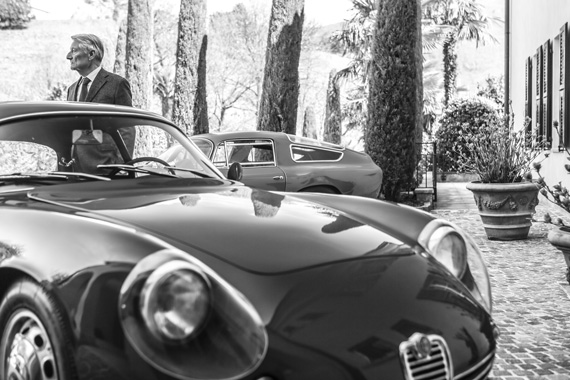
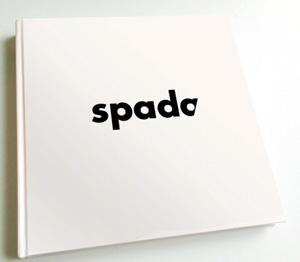
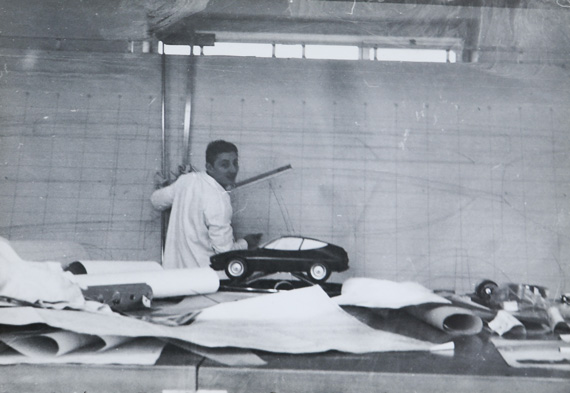
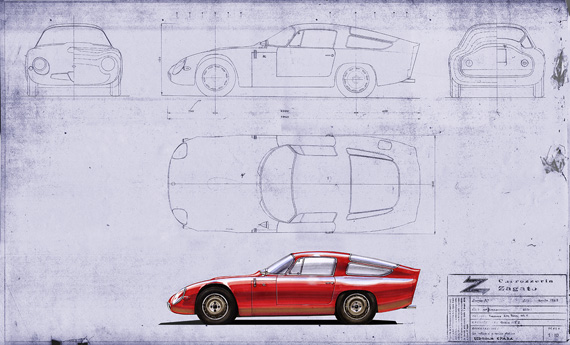
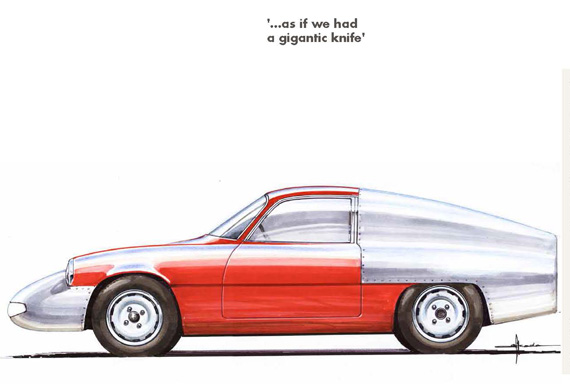
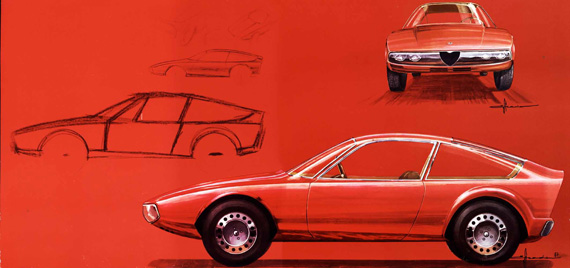
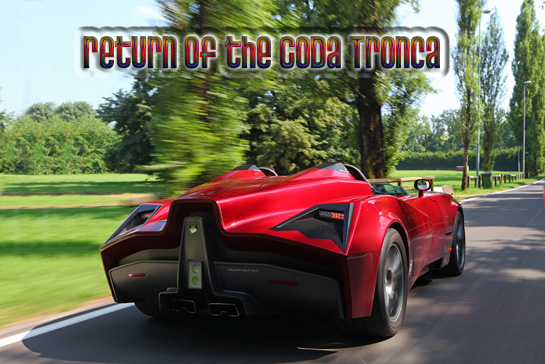
that back of that Spada Codatronca Monza looks like the front of the packard ‘predictor’ show car of the fifties.a bit like an edsel as well lol.